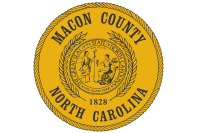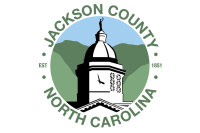The gall
The various relationships that exist between plants and animals are fascinating. My view of wildflower ecology is dominated by the specific pollination requirements of a given plant. Insect pollination is usually a two-way exchange in which the insect benefits as much as the plant. One achieves fertilization while the other obtains precious energy stores.
But not all relationships with plants are beneficial for the insects involved, particularly those devoured by sundews, pitcher plants, and other carnivorous plants. On the other side of the ledger, many insects devour plants for food or systematically distort them to achieve reproductive goals.
During late fall and winter walks, you can readily observe such distortion in the form of the various insect-induced galls that appear on plants. Galls are tumorous growths on leaves, stems, branches, trunks, and roots caused, sometimes, by other plants. But they are usually induced by insects in order to provide food and protection for developing offspring.
The exact manner in which galls are formed is something of a mystery. It used to be thought that the adult insect stimulated the gall at the time she laid her eggs on the host plant. Current accounts seem to lean toward the hypothesis that it’s actually the hatched insect larva that initiates gall formation. Once it commences feeding, the larva secretes an enzyme that breaks plant starch down into simple sugar, thereby stimulating plant cells to multiply in abnormal growth patterns.
More than 2,000 kinds of insect galls have been identified in North American plants, with 800 of these caused by gall wasps. The shape that a gall assumes depends upon the species of insect that creates it. Accordingly, galls are considered by many authorities to be a highly reliable criterion for distinguishing between closely related species.
Galls are easy to find. Any stand of goldenrod weeds will contain two basic types of stem galls: elliptical and round. Blueberry twigs display a reddish-brown, kidney-shaped gall that causes them to bend downward. A spiny gall can be found attached to witch-hazel stems and leaves.
Related Items
Probably the most obvious and well-known type is the oak apple gall. Oak apples are small tan balls from one to two inches in diameter. They are found on the leaves of several oak species that grow on dry slopes throughout Western North Carolina, especially black oak.
Since these are usually firmly attached to the leaf mid-vein or stem, they often remain on the tree throughout the winter months. Some are hollow while others are full of a spongy growth in which you can locate the larva. (A small exit hole in the side of the gall indicates that the adult wasp has already emerged.) You may discover ants, wasps, and other critters that have taken up residence in the chamber.
I wouldn’t eat one, but some sources describe oak apples as being edible. From ancient times, they have also been a source of dyes and inks. Vincent van Gogh used oak apple gall ink (also known as iron-gall ink) to tint his drawings. The ink is still manufactured commercially by various labs that extract the tannic acids found in the oak apples by grinding and soaking them in water or wine for about a week, then adding ferrous sulphate to obtain a lustrous purplish-black ink. The high-quality ink obtained from the Aleppo oak gall of Asia Minor was at one time specified for use by the U.S. Treasury.
In A Field Guide to Eastern Forests of North America (1988), biologist John C. Kricher theorized that, “Chemical irritation produced by boring larvae was probably the initial stimulation leading to gall evolution. Plants developed ‘tumors’ in response to the irritation caused by insects, and the insects adapted to use the galls to protect and feed developing larvae.”
And so it goes. Plants and animals have using and abusing one another for millions of years. All we have to do to comprehend and appreciate this constantly evolving network of relationships is get out the door and take a closer look.
George Ellison wrote the biographical introductions for the reissues of two Appalachian classics: Horace Kephart’s Our Southern Highlanders and James Mooney’s History, Myths, and Sacred Formulas of the Cherokees. In June 2005, a selection of his Back Then columns was published by The History Press in Charleston as Mountain Passages: Natural and Cultural History of Western North Carolina and the Great Smoky Mountains. Readers can contact him at P.O. Box 1262, Bryson City, N.C., 28713, or at This email address is being protected from spambots. You need JavaScript enabled to view it..









